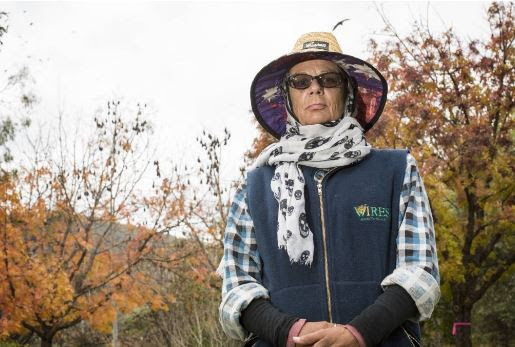Bat Issues | Tamworth Regional Council gets to work on flying fox plan
COUNCIL has started removing non-native trees along the Peel River in a bid to help those affected by the town’s flying fox population.
Amid the roar of wood chippers and the mammals’ screeches overhead, staff started creating a 50 metre buffer-zone for residents and businesses at the Paradise-end of King George V Ave.
What's council doing to help residents living under the flight path of 100,000+ flying foxes? Story coming soon @The_NDL pic.twitter.com/qmiRv8SRmX— Jacob McArthur (@jlmcarthur4) 13 June 2017
The plan is to thin-out non-native trees along the river.
“We initially had about the first kilometer from here towards Nemingha,” council manager of regulatory services, Ross Briggs, said.
“But considering this camp has now grown to at least two kilometers, we will probably look at extending that work.
“Again, it’s reliant on grant money helping us to do the work and probably pitching in from the residents in those areas.”
Tamworth Regional Council hopes to have the King George V Ave work done by the end of this week.
Mr Briggs said the rest of the grant goes towards to roll-out of education for the community about the flying foxes and “how we can live with them”.
“This is not going to be a one-off experience,” Mr Briggs said.
“This is about the third time since I’ve been here and they’ll back in the future.”
‘It’s what’s got to be done’
Ray and Linda Brennan have lived near the top of King George V Ave for about 45 years.
Tamworth Regional Council hopes to have the King George V Ave work done by the end of this week.
Mr Briggs said the rest of the grant goes towards to roll-out of education for the community about the flying foxes and “how we can live with them”.
“This is not going to be a one-off experience,” Mr Briggs said.
“This is about the third time since I’ve been here and they’ll back in the future.”
‘It’s what’s got to be done’
Ray and Linda Brennan have lived near the top of King George V Ave for about 45 years.
UNDER THE FLIGHT-PATH: Grandmother Linda Brennan, with daughter Renae and Imogen, is having trees removed on her property. Photo: Peter Hardin 130617PHB053
Much of council’s current work is centred around their property.
Mr Brennan told The Leader this is biggest the flying fox population has been in his time near the Paradise campsite.
“[We] used to use the clothesline everyday, used to save our water and drink it, used to grow our own vegetables,” he said.
“All of these things we can’t do anymore.”
While it has meant a few changes to his lifestyle, Mr Brennan said he wasn’t too worried about the roosting mammals and welcomed the buffer-zone council was creating around his property.
“Happy or not, it’s what’s got to be done,” he said.
WIRES eyes on the work
As council commenced cutting out a buffer-zone on King George V Ave, Jae Price kept close watch.
TOLERANCE: WIRES coordinator Jae Price calls less vilification of the flying foxes. Photo: Peter Hardin
Ms Price, Wildlife Information, Rescue and Education Service (WIRES) Central North bat coordinator, called for some more tolerance from the community as the work was being carried out.
“I’m here to make sure there are no injuries to the bats and if there are I’m the one who goes in and rescues,” she said.
“I’m also here to make sure there is no stress happening with the colony and to work in with the people helping out.
“[The flying foxes] are pollinators and seed dispersers and, realistically, they should be left on their own and not harassed and vilified.”
Ms Price said the flying mammals were a “keystone” species in the ecosystem.
“A lot of people would rather see them dead, I do understand that,” she said.
“But these guys are what they call a keystone species.
“You take them out of the equation and everything else will start to break down.”














sm done - not instagram
ReplyDelete